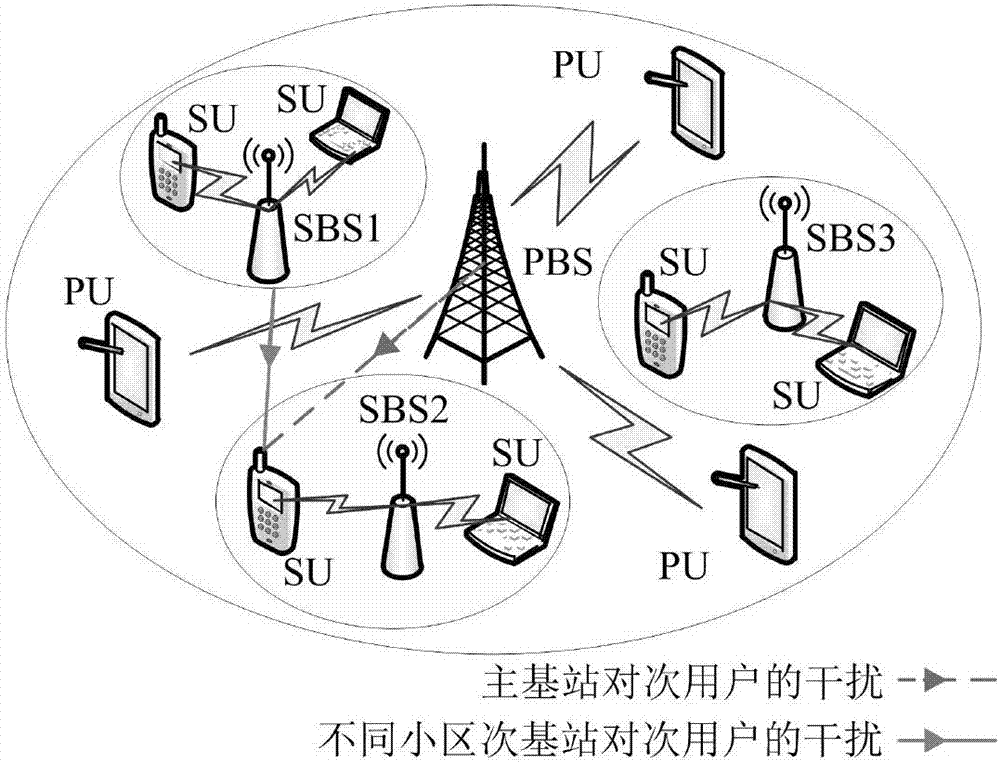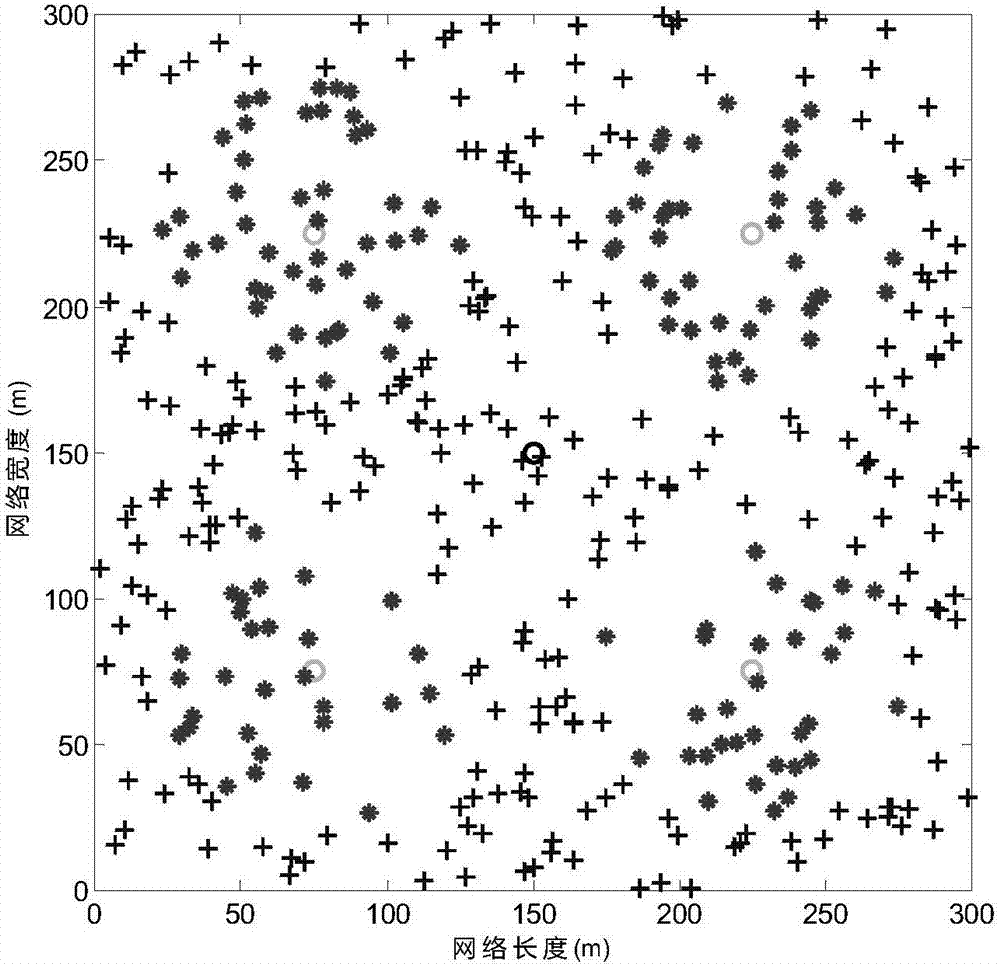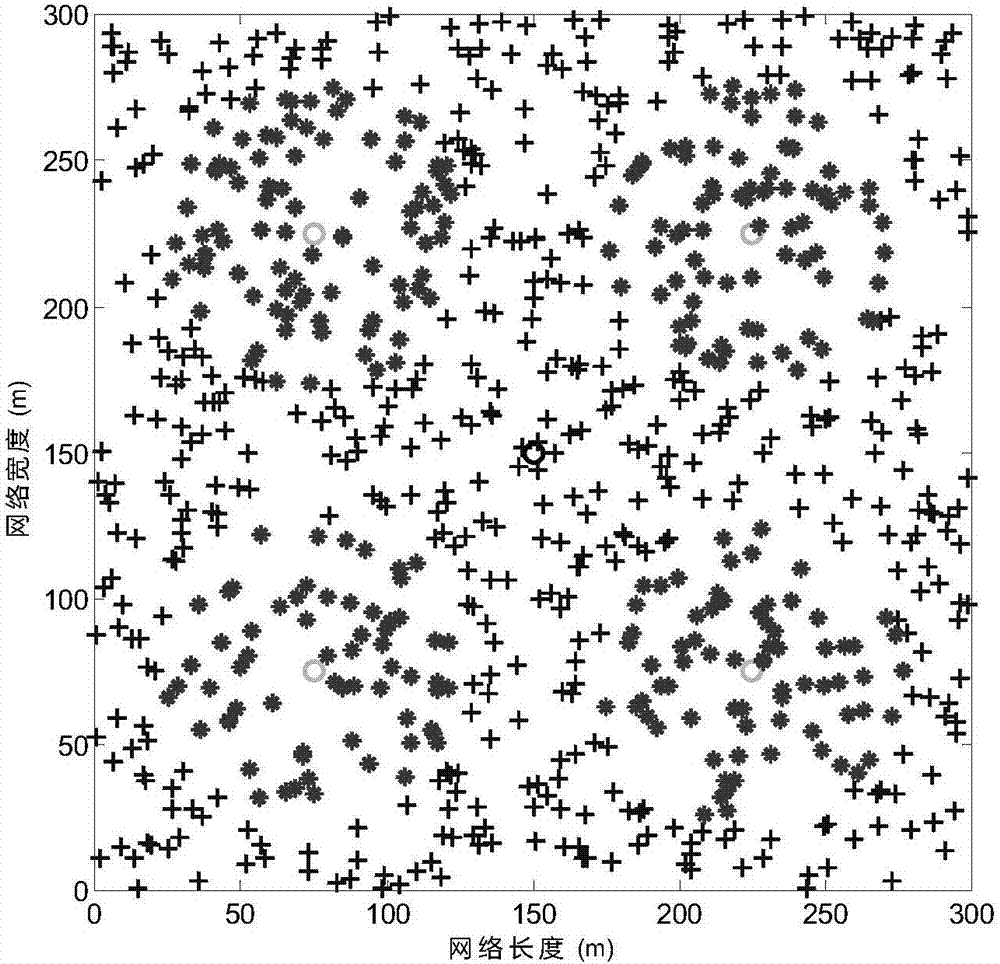Cross-layer interference limited power distribution method for cognitive radio networks
A cognitive radio, cross-layer interference technology, applied in the field of power allocation with limited cross-layer interference
- Summary
- Abstract
- Description
- Claims
- Application Information
AI Technical Summary
Problems solved by technology
Method used
Image
Examples
Embodiment 1
[0092] The method designed in this embodiment introduces cross-layer interference restriction to protect secondary users in the network from excessive interference. The concept of virtual queue is introduced to convert the extra packet delay caused by multi-user contention for the channel into the queuing delay in the virtual queue corresponding to the channel. The main implementation operations involved are the construction of the cognitive radio network model of the underlying spectrum sharing, the problem transformation of the power allocation problem, and the specific algorithm design process.
[0093] This embodiment is oriented to a cognitive radio network cross-layer interference-limited power allocation method, which mainly includes the following key steps:
[0094] 1. The construction of the cognitive radio network model structure of the underlying spectrum sharing:
[0095] Section 1.1. Establish transmission power model P k,m,l , P k,m,l Indicates the power of th...
PUM
 Login to View More
Login to View More Abstract
Description
Claims
Application Information
 Login to View More
Login to View More - R&D
- Intellectual Property
- Life Sciences
- Materials
- Tech Scout
- Unparalleled Data Quality
- Higher Quality Content
- 60% Fewer Hallucinations
Browse by: Latest US Patents, China's latest patents, Technical Efficacy Thesaurus, Application Domain, Technology Topic, Popular Technical Reports.
© 2025 PatSnap. All rights reserved.Legal|Privacy policy|Modern Slavery Act Transparency Statement|Sitemap|About US| Contact US: help@patsnap.com



